Unearthing Value: A Comprehensive Guide to Precious Metals Exchange-Traded Funds (ETFs)
Are you curious about how to invest in valuable commodities like gold, silver, or platinum without the complexities of physical ownership? Perhaps you’ve heard of Exchange-Traded Funds, or ETFs, and wonder if they offer a way to gain exposure to these traditional safe-haven assets. In today’s dynamic financial landscape, Precious Metals ETFs have become an increasingly popular and accessible pathway for investors to participate in these markets. This article will delve into the world of these specialized funds, exploring their mechanics, diverse types, compelling benefits, and crucial risks, providing you with a foundational understanding to potentially enhance your portfolio.
We’ll break down what Precious Metals ETFs are, how they function, and the strategic advantages they offer, such as portfolio diversification and enhanced liquidity. We will also candidly discuss the inherent risks, including market volatility and unique tax implications. Finally, we’ll equip you with key considerations for navigating this market and compare these ETFs with other traditional investment avenues, helping you make informed decisions.
What Are Precious Metals ETFs and How Do They Function?
At its core, a Precious Metals ETF is an investment fund that trades on major stock exchanges, much like an individual stock. Its primary purpose is to give investors exposure to the price movements of precious metals—such as gold, silver, platinum, and palladium—without requiring them to physically buy, store, or insure the actual metal. Think of it as owning a small share of a large vault filled with bullion, or a stake in companies that dig these metals out of the ground. 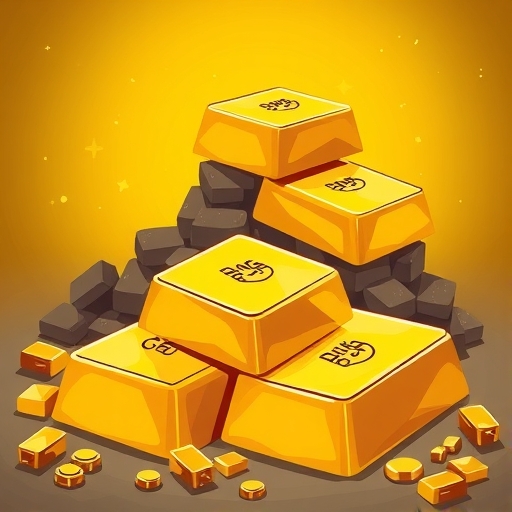
These funds are sponsored by financial institutions and their value is typically determined by the Net Asset Value (NAV) of their underlying holdings. When you buy shares of a Precious Metals ETF, you aren’t getting a physical bar of gold; instead, you’re buying a claim on the fund’s assets. This structure offers a streamlined way to invest, enabling various order types like stop-losses and limits, which aren’t practical with physical bullion. But how do these ETFs actually hold their value?
There are typically two main categories of Precious Metals ETFs, each with distinct operational models:
-
Precious Metal Commodity ETFs: These funds aim to track the spot price of the metals directly. They do this primarily by either:
- Holding physical bullion (gold bars, silver ingots) in secure vaults, often with a major custodian like HSBC USA, NA Bank in London or Bank of New York Mellon in New York. Funds like SPDR Gold Shares (GLD) and iShares Gold Trust (IAU) are prime examples, physically backed by gold. Similarly, the iShares Silver Trust (SLV) and abrdn Physical Platinum Shares ETF (PPLT) hold physical silver and platinum, respectively.
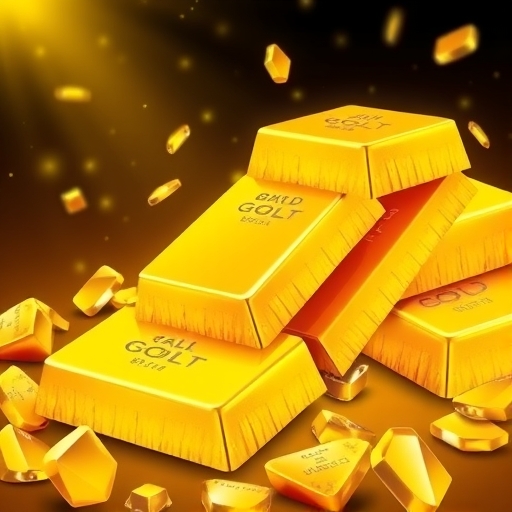
- Investing in derivatives contracts, such as futures contracts, which are agreements to buy or sell a commodity at a predetermined price and time. While these offer exposure without physical storage, they introduce complexities like “rolling costs” and potential underperformance in certain market conditions.
- Holding physical bullion (gold bars, silver ingots) in secure vaults, often with a major custodian like HSBC USA, NA Bank in London or Bank of New York Mellon in New York. Funds like SPDR Gold Shares (GLD) and iShares Gold Trust (IAU) are prime examples, physically backed by gold. Similarly, the iShares Silver Trust (SLV) and abrdn Physical Platinum Shares ETF (PPLT) hold physical silver and platinum, respectively.
- Precious Metal Mining ETFs: Instead of holding the metals themselves, these ETFs invest in publicly traded companies involved in the exploration, extraction, refining, and trading of precious metals. The VanEck Rare Earth/Strategic Metals ETF (REMX) is an example that focuses on companies dealing with specific industrial metals. While these funds offer exposure to the sector, their performance is tied to the success and operational risks of the mining companies, not just the metal’s price.
Understanding these distinctions is crucial, as the type of ETF you choose will directly influence its risk profile and how closely it tracks the actual metal’s price. For instance, a physically-backed gold ETF aims to mirror gold’s price more directly than an ETF investing in gold mining stocks, which also contends with factors like labor shortages, geological surprises, and political struggles in mining regions.
To further clarify the differences, here is a summary table comparing the two main types of Precious Metals ETFs:
| ETF Type | Underlying Asset | Primary Goal | Key Advantage | Key Risk/Consideration |
|---|---|---|---|---|
| Precious Metal Commodity ETFs (Physically Backed) | Physical bullion (gold, silver, platinum) | Track spot price of the metal directly | Direct price correlation, less counterparty risk than derivatives | Storage costs (via expense ratio), “collectibles” tax treatment |
| Precious Metal Commodity ETFs (Futures-based) | Derivatives contracts (futures) | Track spot price of the metal indirectly | Exposure without physical storage | “Rolling costs,” potential tracking error, contango/backwardation issues |
| Precious Metal Mining ETFs | Stocks of mining companies | Exposure to the performance of the mining sector | Potential for higher growth if companies perform well | Company-specific risks, operational challenges, less direct metal price correlation |
The Strategic Advantages and Inherent Risks of Precious Metals ETF Investing
Investing in Precious Metals ETFs offers a compelling blend of benefits that appeal to a wide range of investors, from those seeking portfolio stability to those looking for growth potential. However, like all investments, they come with their own set of risks that you must carefully consider.
Key Benefits of Investing in Precious Metals ETFs:
For many, the appeal of these funds lies in their ability to provide exposure to valuable commodities with relative ease:
- Diversification: Precious metals, particularly gold, have long been considered a store of value and an excellent inflation hedge. They often move independently of traditional assets like stocks and bonds, acting as a buffer against economic turmoil or market downturns. Adding these ETFs can help make your overall investment portfolio more resilient.
- Liquidity: Unlike physical bullion, which can be cumbersome and slow to sell, Precious Metals ETFs trade on stock exchanges throughout the day. This means you can easily buy or sell shares at prevailing market prices, offering greater flexibility and quicker access to your capital.
- Cost-Effectiveness: Direct ownership of physical metals comes with significant ancillary costs, including secure storage, insurance against theft or damage, and transportation. By investing in an ETF, you avoid these burdens, paying only a modest expense ratio, which is a small annual fee charged by the fund manager.
- Accessibility: You can invest in Precious Metals ETFs through any standard brokerage account, including tax-advantaged accounts like IRAs. This broadens access for individual investors who might find buying large bullion bars prohibitive.
-
Lower Minimum Investment: A single share of a gold ETF, for example, might represent a small fraction of an ounce of gold. This allows investors to gain exposure with smaller amounts of capital compared to purchasing full ounces or bars of precious metals.
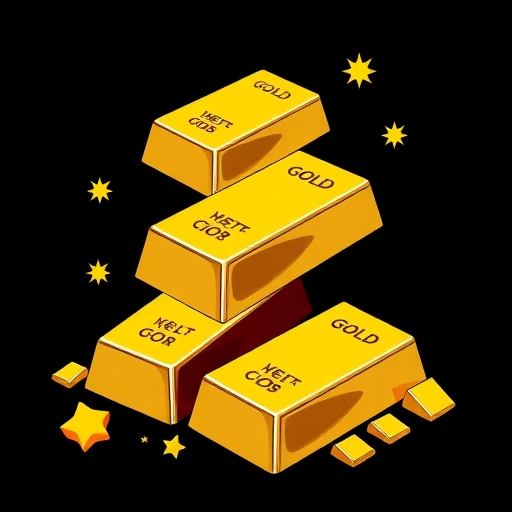
- Transparency: Most Precious Metals ETFs, especially physically-backed ones, regularly publish their holdings, often down to the individual serial numbers of the bars in their vaults. This level of transparency allows investors to verify the underlying assets backing their investment.
- Ease of Valuation: Since ETFs trade on exchanges like stocks, their prices are readily available throughout the trading day, making it easy to monitor your investment’s value in real-time. This contrasts with physical metals, where real-time valuation often requires checking dealer prices.
- Diversification within the sector: Beyond just gold, these ETFs allow for easy diversification into other precious metals like silver, platinum, and palladium, each with its own supply/demand dynamics and industrial applications, further enhancing portfolio resilience.
Inherent Risks and Limitations:
While the advantages are clear, it’s equally important to understand the downsides:
- Volatility: The prices of precious metals are highly sensitive to global economic conditions, the strength of the U.S. dollar, supply and demand dynamics, and geopolitical events. This means your investment can experience significant price swings.
- Counterparty Risk: When you invest in an ETF, you’re relying on the financial stability and integrity of the fund’s management and its custodians. For physically-backed ETFs, there’s a risk that the custodian might default or that the fund’s assets aren’t fully secured as claimed.
- Tracking Error: No ETF perfectly mirrors its underlying asset. Factors like fund management fees, operational costs, and the specific investment strategy (e.g., using futures contracts instead of physical holdings) can cause the ETF’s performance to deviate slightly from the actual metal’s price.
- Tax Implications: This is a crucial point for long-term investors. The Internal Revenue Service (IRS) typically classifies Precious Metals ETFs that hold physical bullion as “collectibles” for tax purposes. This means any long-term capital gains (assets held for more than a year) are often taxed at a higher maximum rate of 28%, compared to the standard 20% for most other long-term investments. This can significantly impact your net returns.
- Delivery Constraints: While some physically-backed ETFs theoretically allow for the redemption of physical metal, the requirements are often prohibitively high for individual investors. For instance, redeeming physical gold from GLD might require owning 100,000 shares, equating to a value of millions of dollars, effectively limiting physical delivery to institutional investors or “authorized participants.”
Navigating the Market: Key Considerations for Precious Metals ETF Investors
Choosing the right Precious Metals ETF requires more than just knowing its metal. To make an informed decision, you need to dig deeper into several practical factors that can significantly impact your investment returns and overall experience. As a discerning investor, what should you really be looking for?
- Expense Ratios: This is the annual fee charged by the fund, expressed as a percentage of your total investment. Even a seemingly small difference in expense ratios can compound over time and significantly erode your returns. For example, the iShares Gold Trust (IAU) has a lower expense ratio than the larger SPDR Gold Shares (GLD), which can be a key differentiator for long-term holders. Always compare these fees across similar ETFs.
- Liquidity (Average Daily Trading Volume): How easily can you buy and sell shares of the ETF without significantly impacting its price? This is measured by its average daily trading volume. ETFs with high liquidity are generally easier to trade, ensuring you can enter or exit positions efficiently. High volume also suggests strong investor interest and robust market making.
-
Investment Strategy and Underlying Assets: As we discussed, some ETFs hold physical metal, others use derivatives, and some invest in mining companies. Understand exactly what the ETF invests in.
- Are you seeking direct exposure to the metal’s price (e.g., via physical gold ETFs like GLD or IAU)?
- Are you comfortable with the complexities and “roll costs” of a futures-based ETF?
- Or do you prefer exposure to the industry itself through Precious Metal Mining ETFs, accepting the additional operational risks of the companies?
Each approach carries a different risk and reward profile.
- Tracking Error: How closely does the ETF’s performance align with the price of its underlying precious metal? A lower tracking error indicates that the fund is doing a better job of mirroring the asset it’s supposed to represent. This is particularly important for commodity ETFs that aim for direct price correlation.
- Tax Implications Revisited: Given the “collectibles” tax treatment, it’s vital to factor in the potential 28% maximum long-term capital gains tax rate for physically-backed Precious Metals ETFs. This is a higher rate than you’d typically pay on stocks or bonds held for over a year. Consider how this impacts your long-term financial planning and consult with a tax advisor if unsure.
To aid in your decision-making, here’s a comparative look at some popular Precious Metals ETFs and their characteristics:
| ETF Ticker | Underlying Metal | Investment Strategy | Approx. Expense Ratio | AUM (Billions USD) |
|---|---|---|---|---|
| GLD (SPDR Gold Shares) | Gold | Physically backed by gold bullion | 0.40% | $80+ |
| IAU (iShares Gold Trust) | Gold | Physically backed by gold bullion | 0.25% | $37+ |
| SLV (iShares Silver Trust) | Silver | Physically backed by silver bullion | 0.50% | $6.5+ |
| PPLT (abrdn Physical Platinum Shares ETF) | Platinum | Physically backed by platinum bullion | 0.60% | $1+ |
| REMX (VanEck Rare Earth/Strategic Metals ETF) | Rare Earth/Strategic Metals | Invests in mining companies | 0.59% | $0.5+ |
Precious Metals ETFs vs. Traditional Investments: A Comparative View
When considering an investment in precious metals, ETFs are just one option. It’s helpful to compare them against other common avenues to understand their unique advantages and disadvantages. Let’s look at how Precious Metals ETFs stack up against physical metals, mutual funds, and individual mining stocks.
Comparative Table: Precious Metals Investment Options
| Feature | Precious Metals ETFs | Physical Metals (Bullion, Coins) | Precious Metals Mutual Funds | Individual Mining Stocks |
|---|---|---|---|---|
| Ownership | Indirect (shares of a fund holding metal/derivatives/stocks) | Direct (you hold the actual metal) | Indirect (shares of a fund holding mining stocks) | Direct (shares of a specific company) |
| Liquidity | High (trades on exchange all day) | Moderate to Low (requires dealers, shipping, etc.) | Low (trades once daily after market close) | High (trades on exchange all day) |
| Costs | Low expense ratio | High (storage, insurance, dealer premiums) | Moderate to High (higher expense ratios, sales loads) | Brokerage commissions (if applicable) |
| Risks | Volatility, tracking error, counterparty risk, tax implications | Theft, damage, storage costs, authenticity, lower liquidity | Market risk, management fees, operational risks of underlying companies | Company-specific risks (management, operations, geology, politics), market volatility |
| Diversification | Good (often hedge against inflation) | Excellent (hedge against systemic risk) | Good (diversified within the mining sector) | Limited (tied to a single company) |
| Accessibility | High (standard brokerage accounts) | Moderate (specialty dealers) | High (standard brokerage accounts) | High (standard brokerage accounts) |
As you can see, each option has its trade-offs. Physical metals offer the ultimate hedge against systemic risk and direct ownership, but they come with significant logistical and cost burdens. Imagine having to secure and insure a large quantity of gold bullion yourself!
Precious Metals Mutual Funds, while offering diversification, typically have higher expense ratios and only trade once a day after the market closes, limiting your trading flexibility compared to ETFs. You might not get the immediate price you see during the trading day.
Investing directly in Mining Companies‘ individual stocks provides equity exposure to the industry, but their performance isn’t solely tied to the price of gold or silver. These companies face unique operational risks—from labor strikes and exploration uncertainty to political instability in mining regions—which can make their stock prices quite volatile and distinct from the commodity’s price movement. For example, a major discovery or a mine closure can significantly impact a specific mining stock, independent of global metal prices.
Top Performers and Future Outlook in the Precious Metals ETF Space
The market for precious metals has seen significant activity, especially in recent times. For instance, 2024 delivered strong performance for several precious metals, with gold up 27.2% and silver up 21.5%, notably outperforming the S&P 500 index. This kind of performance often draws considerable investor interest, highlighting their role as a potential haven during economic uncertainty.
Here are some of the most prominent Precious Metals ETFs you might encounter, offering exposure to different metals:
-
SPDR Gold Shares (GLD): This is the largest gold ETF in the world, physically backed by gold bullion held in vaults. With Assets Under Management (AUM) often exceeding $80 billion, it’s a benchmark for gold investors.
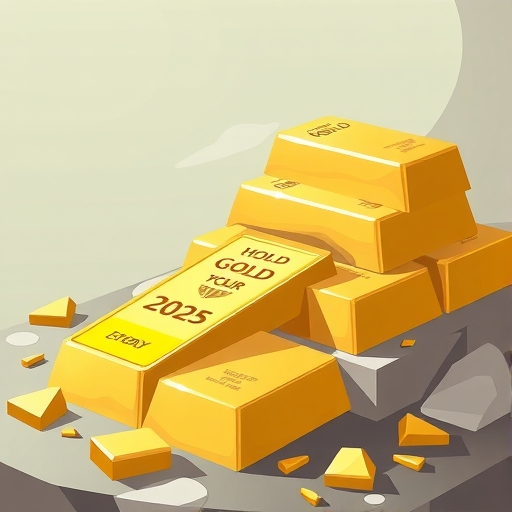
- iShares Gold Trust (IAU): Another physically backed gold ETF, IAU often boasts a slightly lower expense ratio than GLD, making it an attractive alternative for some investors. Its AUM is around $37 billion.
- iShares Silver Trust (SLV): As the name suggests, this ETF provides exposure to silver prices and is physically backed by silver bullion. Its AUM is typically around $6.5 billion.
- abrdn Physical Platinum Shares ETF (PPLT): For those interested in platinum, PPLT is the largest physically backed platinum ETF, with AUM often over $1 billion.
- VanEck Rare Earth/Strategic Metals ETF (REMX): This ETF takes a different approach, investing in companies involved in rare earth metals and strategic metals, which have unique industrial uses in magnets, batteries, and electronics. This offers exposure to a different facet of the metals market.
What drives the prices of these metals and, by extension, their ETFs? Several factors are always at play:
- Central Bank Purchases: Central banks globally are significant buyers of gold, often increasing their holdings during times of economic instability, which can heavily impact prices.
- Industrial Demand: Metals like silver, platinum, and palladium have substantial industrial applications. Silver is crucial in electronics and solar panels, while platinum and palladium are essential in automotive catalytic converters. Therefore, their prices are sensitive to manufacturing output, technological advancements, and even auto sales figures.
- Inflation and Economic Uncertainty: As discussed, gold often shines as a safe haven during periods of high inflation or economic volatility. When traditional markets are shaky, investors often flock to precious metals.
- U.S. Dollar Strength: Precious metals are often priced in U.S. dollars. A stronger dollar can make metals more expensive for international buyers, potentially dampening demand and prices, and vice-versa.
Understanding these drivers can help you anticipate market movements and make more informed decisions about your Precious Metals ETF investments. The future outlook for these metals remains tied to global economic health, inflation trends, and ongoing industrial innovation.
The performance of precious metals can be influenced by a complex interplay of economic and geopolitical factors. Monitoring these trends is crucial for any investor.
| Factor | Impact on Precious Metals | Example Metal Affected |
|---|---|---|
| Inflation | Positive (safe haven against purchasing power erosion) | Gold, Silver |
| Interest Rates (Rising) | Negative (increases opportunity cost of holding non-yield assets) | Gold |
| Geopolitical Instability | Positive (flight to safety) | Gold |
| Industrial Production Growth | Positive (increased demand for industrial metals) | Silver, Platinum, Palladium |
| U.S. Dollar Strength | Negative (makes dollar-priced metals more expensive for foreign buyers) | All precious metals |
Conclusion
Precious Metals ETFs present a compelling and accessible investment vehicle for those seeking exposure to gold, silver, platinum, and palladium. They offer a unique blend of portfolio diversification, enhanced liquidity, and cost-effectiveness that can significantly enhance a well-rounded investment portfolio, acting as a potential hedge against inflation and economic uncertainty.
However, as we’ve explored, successful investing in this space requires more than just understanding the appeal of precious metals. You, as an investor, must conduct thorough due diligence, carefully understanding the specific fund’s investment strategy, scrutinizing its expense ratios, and being aware of potential risks such as market volatility, counterparty risk, and especially the unique “collectibles” tax implications. By carefully weighing these factors and aligning them with your personal financial goals and risk tolerance, you can effectively leverage Precious Metals ETFs as a strategic tool to navigate market fluctuations and pursue your financial objectives.
Disclaimer: This article is intended for informational and educational purposes only and does not constitute financial advice. Investing in precious metals ETFs involves risks, including the potential loss of principal. Always consult with a qualified financial advisor before making any investment decisions.
Frequently Asked Questions (FAQ)
Q: What is the primary difference between a physically-backed Precious Metals ETF and a mining ETF?
A: A physically-backed ETF directly holds physical bullion (like gold bars) in secure vaults, aiming to track the metal’s spot price. In contrast, a mining ETF invests in the stocks of companies involved in the extraction and processing of precious metals, meaning its performance is tied to the success and operational risks of those companies, not just the metal’s price.
Q: Are Precious Metals ETFs considered a good hedge against inflation?
A: Yes, historically, precious metals, especially gold, have been considered a strong hedge against inflation. When the purchasing power of fiat currencies declines, investors often flock to tangible assets like gold, which tends to retain or increase its value during such periods, making Precious Metals ETFs an attractive option for inflation protection.
Q: What are the main tax implications for investing in physically-backed gold ETFs like GLD?
A: For U.S. investors, physically-backed gold ETFs like GLD are typically classified by the IRS as “collectibles.” This means any long-term capital gains (assets held for over one year) are subject to a maximum tax rate of 28%, which is generally higher than the standard long-term capital gains rates for other types of investments like stocks or bonds. It’s crucial to consult a tax advisor for personalized guidance.


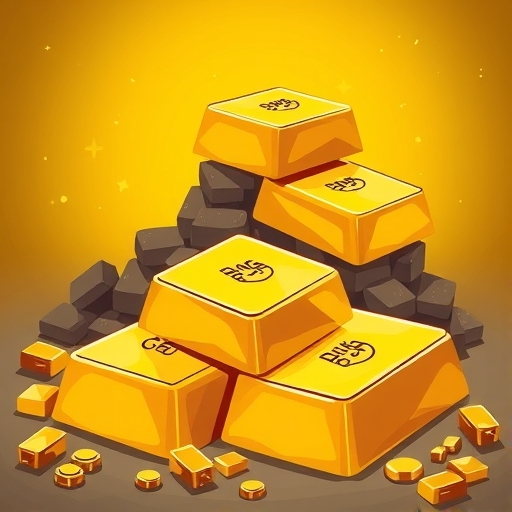
No responses yet